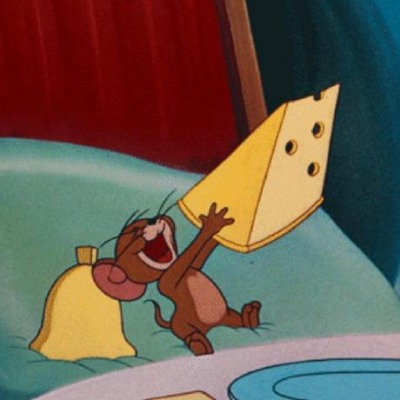박민혀기
캡스톤 Age_Perception, Face_Perception(dlib model) 본문
Age_Perception Source Code(Image process)
모델 파일은 네이버 드라이버에 업로드
import cv2, glob, dlib
age_list = ['(0, 4)','(5, 9)','(10, 19)','(20, 24)','(25, 29)','(30, 39)','(40, 49)','(50, 80)']
gender_list = ['Male', 'Female']
detector = dlib.get_frontal_face_detector()
age_net = cv2.dnn.readNetFromCaffe('models/deploy_age.prototxt', 'models/age_net.caffemodel')
gender_net = cv2.dnn.readNetFromCaffe('models/deploy_gender.prototxt', 'models/gender_net.caffemodel')
img_list = glob.glob('img/*.jpg')
for img_path in img_list:
img = cv2.imread(img_path)
faces = detector(img)
for face in faces:
x1, y1, x2, y2 = face.left(), face.top(), face.right(), face.bottom()
face_img = img[y1:y2, x1:x2].copy()
blob = cv2.dnn.blobFromImage(face_img, scalefactor=1, size=(227, 227), mean=(78.4263377603, 87.7689143744, 114.895847746), swapRB=False, crop=False)
# predict gender
gender_net.setInput(blob)
gender_preds = gender_net.forward()
gender = gender_list[gender_preds[0].argmax()]
# predict age
age_net.setInput(blob)
age_preds = age_net.forward()
age = age_list[age_preds[0].argmax()]
# visualize
cv2.rectangle(img, (x1, y1), (x2, y2), (255,255,255), 2)
overlay_text = '%s %s' % (gender, age)
cv2.putText(img, overlay_text, org=(x1, y1), fontFace=cv2.FONT_HERSHEY_SIMPLEX, fontScale=1, color=(0,0,0), thickness=10)
cv2.putText(img, overlay_text, org=(x1, y1), fontFace=cv2.FONT_HERSHEY_SIMPLEX, fontScale=1, color=(255,255,255), thickness=2)
cv2.imshow('img', img)
cv2.imwrite('result/%s' % img_path.split('/')[-1], img)
key = cv2.waitKey(0) & 0xFF
if key == ord('q'):
break
Face_Perception Source Code(Image process)
모델 파일은 네이버 드라이버에 업로드
descs_make.py
import dlib, cv2
import numpy as np
import time
start = time.time()
detector = dlib.get_frontal_face_detector()
sp = dlib.shape_predictor('models/shape_predictor_68_face_landmarks.dat')
facerec = dlib.face_recognition_model_v1('models/dlib_face_recognition_resnet_model_v1.dat')
def find_faces(img):
dets = detector(img, 1)
if len(dets) == 0:
return np.empty(0), np.empty(0), np.empty(0)
rects, shapes = [], []
shapes_np = np.zeros((len(dets), 68, 2), dtype=np.int)
for k, d in enumerate(dets):
rect = ((d.left(), d.top()), (d.right(), d.bottom()))
rects.append(rect)
shape = sp(img, d)
# convert dlib shape to numpy array
for i in range(0, 68):
shapes_np[k][i] = (shape.part(i).x, shape.part(i).y)
shapes.append(shape)
return rects, shapes, shapes_np
def encode_faces(img, shapes):
face_descriptors = []
for shape in shapes:
face_descriptor = facerec.compute_face_descriptor(img, shape)
face_descriptors.append(np.array(face_descriptor))
return np.array(face_descriptors)
img_paths = {}
descs = {}
f = open('img/name.txt', 'r')
lines = f.readlines()
for name in lines:
img_paths[name.strip()] = 'img/' + name.strip() + '.jpg'
descs[name.strip()] = None
for name, img_path in img_paths.items():
img_bgr = cv2.imread(img_path)
img_rgb = cv2.cvtColor(img_bgr, cv2.COLOR_BGR2RGB)
_, img_shapes, _ = find_faces(img_rgb)
descs[name] = encode_faces(img_rgb, img_shapes)[0]
np.save('img/descs.npy', descs)
print(descs)
end = time.time()
print(f"{end - start : 5f} sec")
Video_Perception.py
import dlib, cv2
import numpy as np
detector = dlib.get_frontal_face_detector()
sp = dlib.shape_predictor('models/shape_predictor_68_face_landmarks.dat')
facerec = dlib.face_recognition_model_v1('models/dlib_face_recognition_resnet_model_v1.dat')
descs = np.load('img/descs.npy', allow_pickle=True)[()]
def encode_face(img):
dets = detector(img, 1)
if len(dets) == 0:
return np.empty(0)
for k, d in enumerate(dets):
shape = sp(img, d)
face_descriptor = facerec.compute_face_descriptor(img, shape)
return np.array(face_descriptor)
cap = cv2.VideoCapture(0)
if not cap.isOpened():
exit()
_, img_bgr = cap.read() # (800, 1920, 3)
padding_size = 0
resized_width = 640
video_size = (resized_width, int(img_bgr.shape[0] * resized_width // img_bgr.shape[1]))
#output_size = (resized_width, int(img_bgr.shape[0] * resized_width // img_bgr.shape[1] + padding_size * 2))
#fourcc = cv2.VideoWriter_fourcc('m', 'p', '4', 'v')
#writer = cv2.VideoWriter('%s_output.mp4' % (video_path.split('.')[0]), fourcc, cap.get(cv2.CAP_PROP_FPS), output_size)
while True:
ret, img_bgr = cap.read()
if not ret:
break
img_bgr = cv2.resize(img_bgr, video_size)
img_rgb = cv2.cvtColor(img_bgr, cv2.COLOR_BGR2RGB)
dets = detector(img_bgr, 1)
for k, d in enumerate(dets):
shape = sp(img_rgb, d)
face_descriptor = facerec.compute_face_descriptor(img_rgb, shape)
last_found = {'name': 'unknown', 'dist': 0.5, 'color': (0,0,255)}
for name, saved_desc in descs.items():
dist = np.linalg.norm([face_descriptor] - saved_desc, axis=1)
if dist < last_found['dist']:
last_found = {'name': name, 'dist': dist, 'color': (255,255,255)}
print(last_found['name'], ' : ', last_found['dist'])
cv2.rectangle(img_bgr, pt1=(d.left(), d.top()), pt2=(d.right(), d.bottom()), color=last_found['color'], thickness=2)
cv2.putText(img_bgr, last_found['name'], org=(d.left(), d.top()), fontFace=cv2.FONT_HERSHEY_SIMPLEX, fontScale=1, color=last_found['color'], thickness=2)
# writer.write(img_bgr)
cv2.imshow('img', img_bgr)
if cv2.waitKey(1) == ord('q'):
break
cap.release()
#writer.release()'Deep Learning' 카테고리의 다른 글
| Mediapipe Example Code(Hand Tracking) (0) | 2023.06.01 |
|---|---|
| RaspberryPi3 mediapipe install (0) | 2023.06.01 |
| 캡스톤 Face_Detection, Motor_Control (0) | 2023.04.04 |
| GDSC Toy 프로젝트 주요코드 (0) | 2023.04.04 |
| GDSC Toy Project 글자인식, JSON 형식 소스코드, 이미지 파일 (0) | 2023.02.03 |
